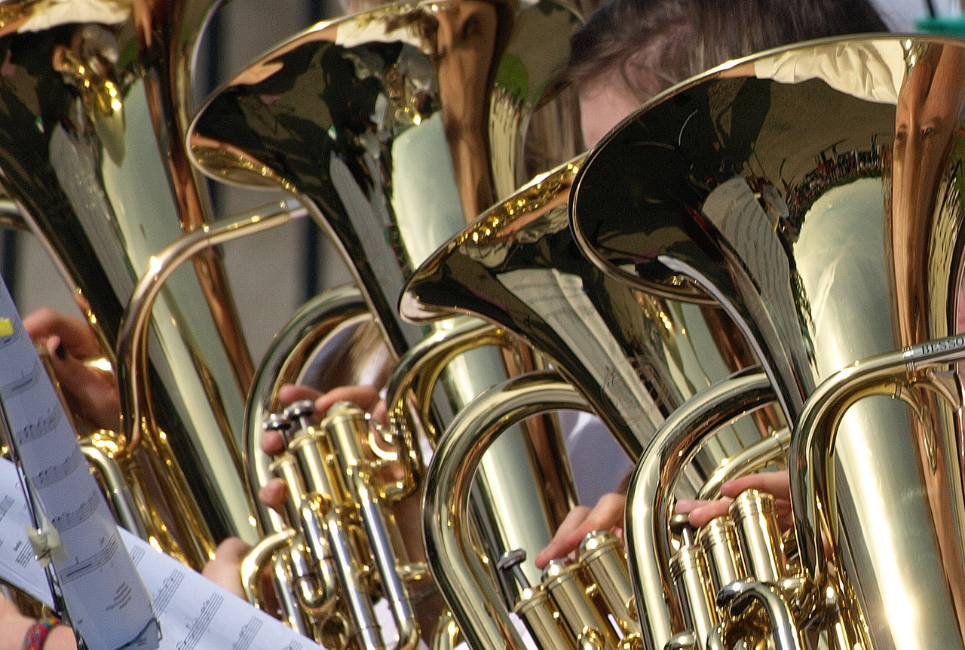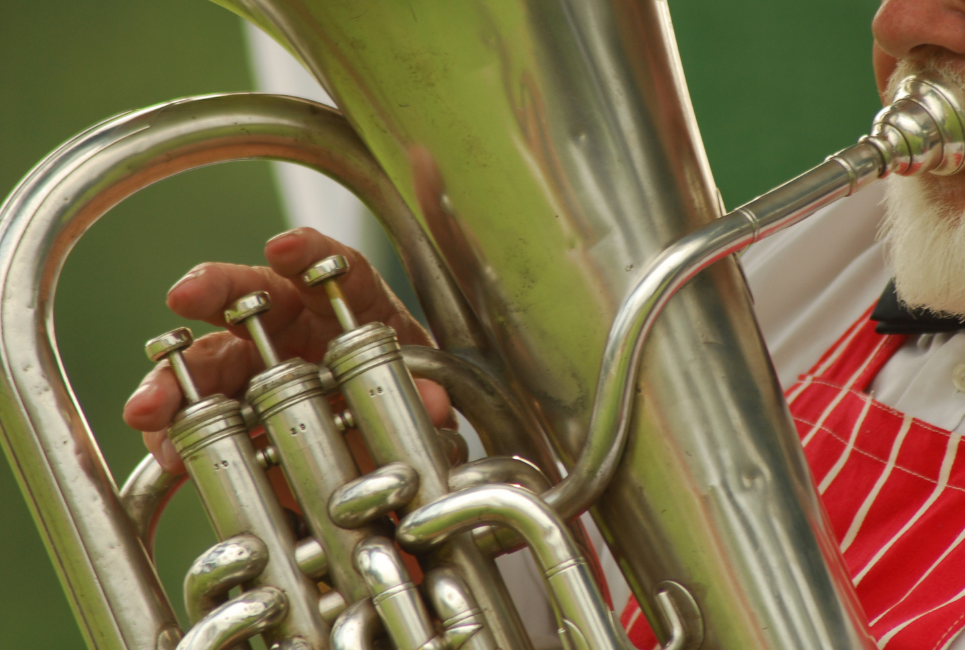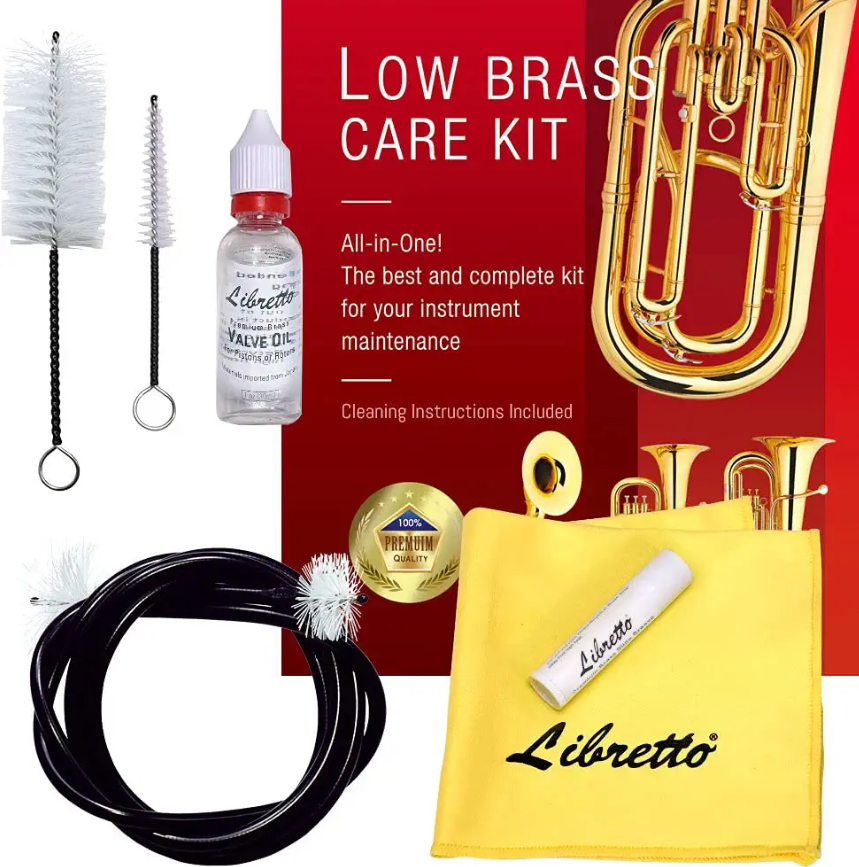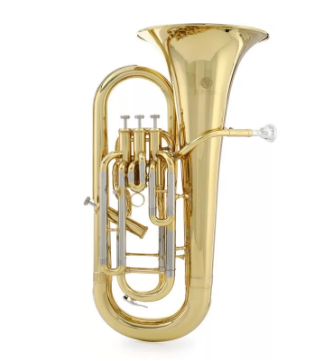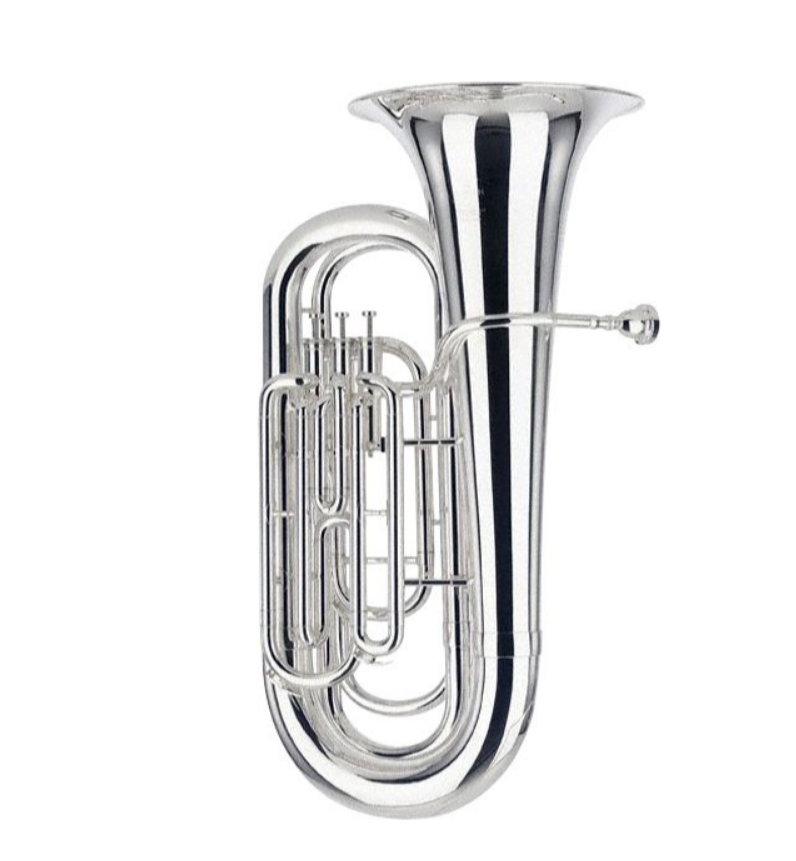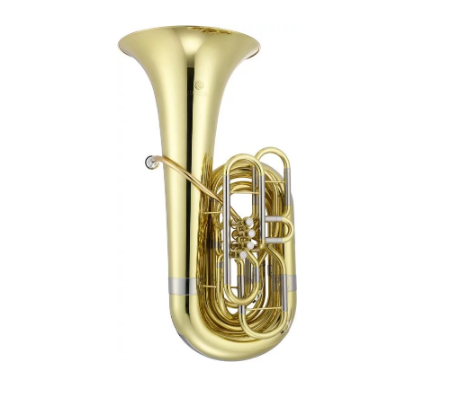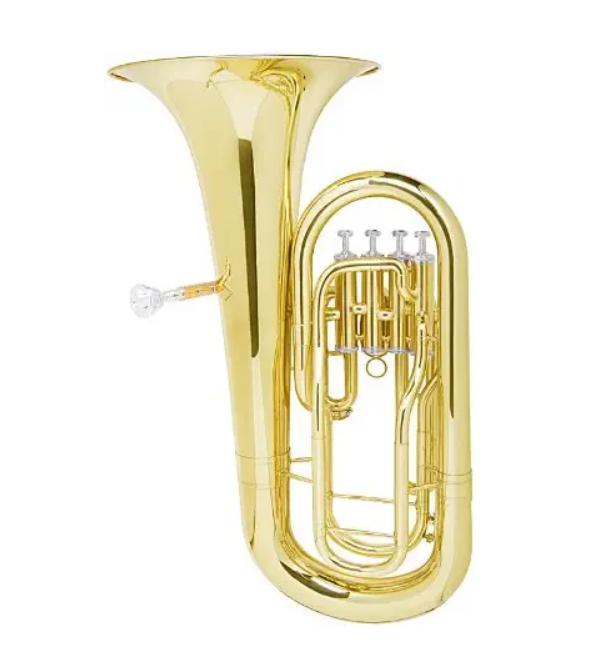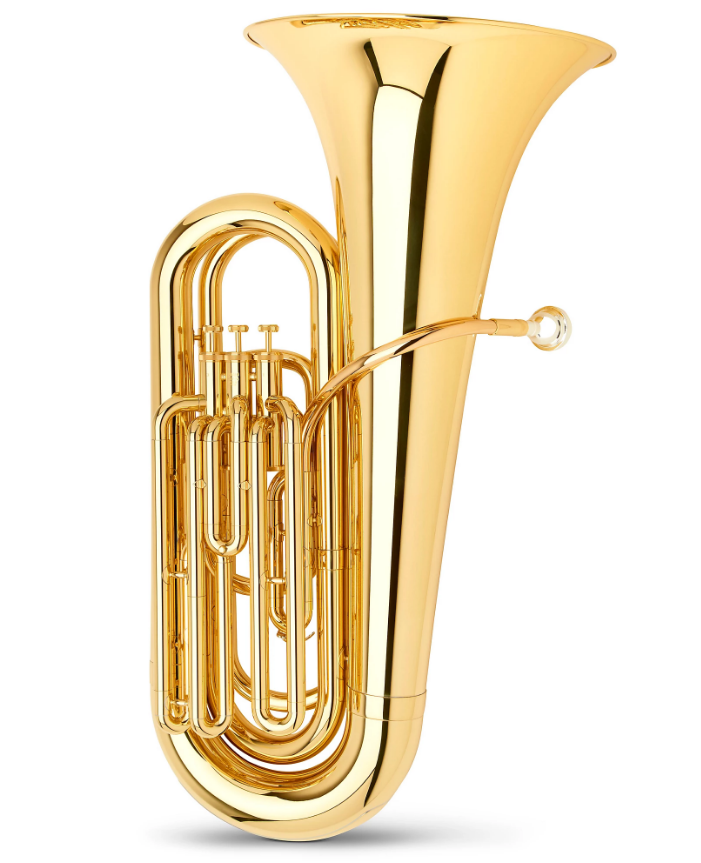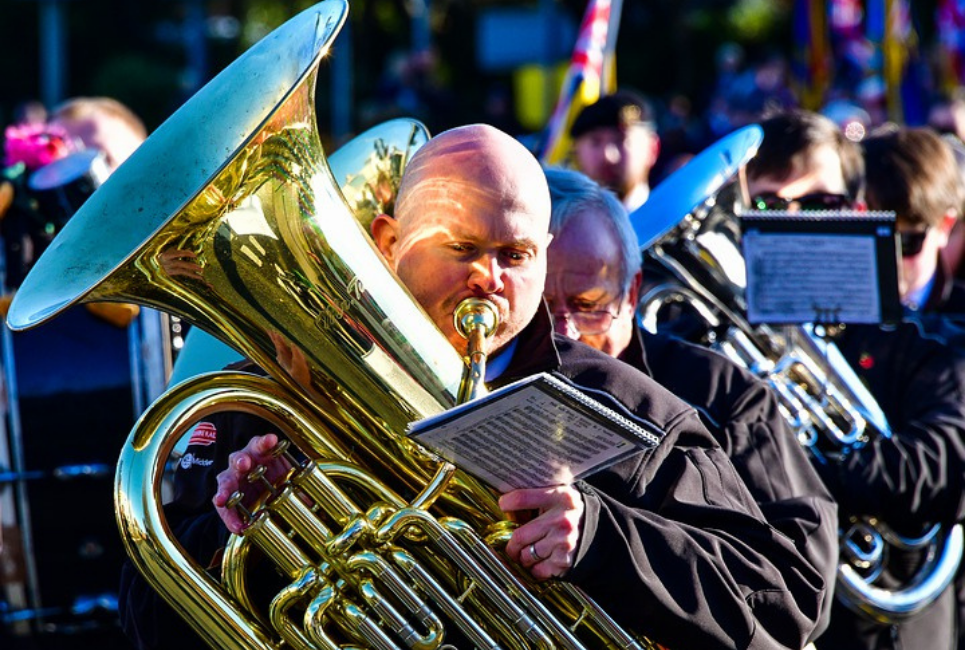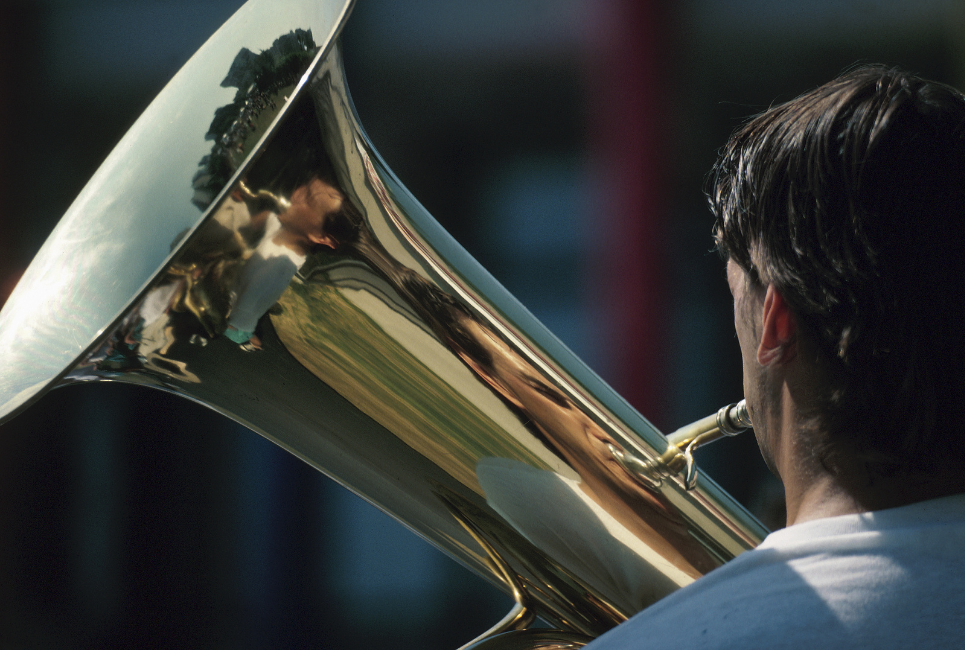- Best Double Bell Euphoniums Guide - September 30, 2022
- How to Find the Best Slide Trumpet - September 30, 2022
- Best Yamaha Euphonium Models Guide - September 26, 2022
If you are exploring the brass family and are unsure where to start, but you know you want something big, it’s time to look at the euphonium vs. tuba compared. The tuba is a large brass instrument that can be played in a marching band, standing, or sitting. However, because I’m so small, the tuba is basically me-size, so it’s something played while sitting. The euphonium is much more physically manageable because it is slightly smaller, although still a large instrument that makes its appearance known.
The first time I ever saw a euphonium was when I directed a Christmas program, and one of my friends was part of a brass quintet. Apparently, he normally played the trumpet, but they already had someone playing the trumpet. When it came time for our dress rehearsal, he showed up with a brass instrument I had never seen. When I asked him about it, he said it was the euphonium.
I admitted that I didn’t know what it was, and he laughed and said he didn’t either, at least not until a few weeks ago when another member of that same brass quintet handed it to him and told him it was basically the same thing so it shouldn’t take him long to switch instruments.
Bottomline Upfront
At first glance, the tuba and euphonium share some lineage, both being part of the tuba family. Both the tuba and euphoniums are used in brass bands, usually in marching bands. But, the tuba is nearly twice as long, with a bigger mouthpiece, and plays one octave lower.
Euphonium vs Tuba Compared
To understand their similarities and differences, you need a quick breakdown of terminology:
Firstly, all instruments in the brass family are made of that: brass. They are wind instruments, meaning you blow air through them to make music. These are subdivided into two groups:
- Low brass instruments
- High brass instruments
| Low Brass | Plays lower octaves | Made with longer, larger tubes | Baritones, tubas, euphoniums, sousaphones |
| High Brass | Plays higher octaves (usually alto or soprano) | Made with shorter, smaller tubes | French horns, trumpets, cornets |
Length
The biggest delineator between brass instruments is their length. The length of the tubing and its size determines the pitch. This is what divides the euphonium and the tuba into the category of low brass instruments.
Differences
- The tubing for tubas is between 13 ft and 18 ft in total length, so it’s wrapped around itself.
- The tubing length for euphoniums averages 9 ft.
Bore
The size of the tubing is equally important. The size is called the bore. The bore refers to the inner diameter size. It’s measured out to 3 decimal places. Because it’s so small, the bore size is not necessarily something a beginner will even notice. Only advanced players notice the difference produced by thousandths of an inch.
Differences
- The bore on the tuba is cylindrical. This means the size of the bore stays the same throughout the entire length of the tubing, and only the bell is tapered.
- The bore on the euphonium is conical. This means the size of the bore gets tapered from small to large, moving from the mouthpiece all the way to the bell.
Bell
The bell is the biggest part of both instruments. Because it is a larger instrument, the bell will be larger than that found on the euphonium. With the tuba, the bell can point upward or toward the front. Similarly, the euphonium bell generally faces upward like a tuba. However, they make marching euphoniums that are designed to face toward the front so that your sound can be projected toward the audience as you march in place.
Similarities
- Both instruments can have a one-piece or two-piece bells.
- Both instruments have conical-shaped bells.
Mouthpiece
Starting at one end of the tubing, you have the mouthpiece. Brass mouthpieces are made from brass, and they have a cup shape to them with a rim on which your lips rest and a throat that funnels the air you produce into the tubing of the instrument. The shape of this funnel can influence the sound you make.
Differences
- Tuba mouthpieces are a large bore.
- Euphonium mouthpieces can be a small bore or large bore.
Valves
Brass instruments piston valves or rotary valves. Piston valves move up and down on a spring found inside the valve cylinder. Rotary valves move in a circle and are found inside the rotor housing.
Rotary oil is usually light and thin. Valve oil is usually thick and heavy. You have to apply care and maintenance to both.
Differences
- Concert tubas can have rotary valves, but regular tubas can use piston valves.
- Euphoniums use piston valves.
Similarities
- Both instruments can have three or four valves.
Maintenance
In addition to adding oil to the valves, the euphonium and the tuba need the same maintenance. Both instruments have components that slide in and out, and to keep them from getting stuck, you have to apply slide grease. You also need to clean your mouthpiece and be able to clean inside some of the tubing where your spit might go. You can get general brass cleaning kits perfect for both tubas and euphoniums.
Purpose
Tubas and euphoniums were developed within the same decade. They both come from Europe and serve similar purposes: to be used in a larger marching band.
Similarities
- Tubas were originally designed in Germany in 1835 and meant to be played while standing or marching in a band. Later, the tuba was modified so that the mouthpiece allowed players to perform sitting.
- Euphoniums were designed in 1843 as a smaller instrument for similar purposes: playing while marching or sitting.
Sizes
In general, the tuba is a much larger instrument than a euphonium, but both families have three different sizes from which to choose.
Differences
- Tubas come in five sizes. Each size has different tubing widths, so the ranges are slightly different.
- Euphoniums come in three sizes.
Sound
Both the tuba and euphonium are part of the low brass category of instruments, so they both play lower octaves and produce deeper sounds. They tend to focus on tenor and bass parts rather than soprano and alto parts, as would be the case in a high brass category.
In this video, you can hear the euphonium show off a beautiful solo to the song Hallelujah:
Differences
- The tuba produces low, staccato notes with a deep sound.
- Euphoniums have richer tones compared to tubas. You can find compensating versions that have additional tubing; these let you keep different keys perfectly in tune.
In this video, you get a fun demonstration of why it’s important to buzz your lips when playing a brass instrument and what the tuba sounds like:
Top Models
If you are investing in a euphonium, there are many models from which to choose, but I recommend Besson. They have been around since 1837 and became a leader among euphoniums after World War Two. If you don’t want to go with the price tag of Besson, Jupiter is a great second-place contender.
Euphoniums
Besson Prodige
Besson has four student model euphoniums
- Prodige 162
- Prodige 163
- Prodige 164
- Prodige 165
These models are all three valves. I like all four because they all have the same bore size and come with the same accessories. Where they differ are the size of the bell and the finish. You can choose an eleven or twelve-inch yellow brass bell. You can also choose a clear lacquer or silver finish on the BE162 models.
Jupiter JEP1020
I also like Jupiter. Their intermediate-level euphonium has four valves and an eleven-inch bell. The bore is the same as the Besson models. You can find clear or silver finishes too. This version comes with the piston compensating system, so it’s very fast and easy to play.
Tubas
Besson
Besson has the 1087 Performance Series Tuba. This is a highly recommended model for beginners because it is slightly smaller and lighter. It comes with four stainless steel valves. It has a student-grade price tag at only a bit over $3,000 compared to the more advanced tuba models from Besson that can exceed $10,000.
Jupiter Performance
Jupiter has the 1100 Performance Series Tuba. This design has four valves. Although this model has a clear lacquer finish, you can pick the silver plated or clear lacquer finish. It has a 17.4-inch bell and a .732-inch bore.
Others
If these don’t work for you, there are cheaper models like Mendini and Yamaha. Because of their price, Mendini by Cecilio euphoniums is found on almost every “top” list. I understand. Where companies like Besson and Jupiter charge thousands of dollars for a good tuba or euphonium, Mendini charges only five hundred or so.
Yamaha is often included in their tubas for similar reasons. Yamaha is a great step up from Mendini and is more of a student/intermediate hybrid.
The problem is, you get what you pay for, as the adage goes. So, if you are worried about quality and have the money to spend, invest it in a high-quality brass instrument that won’t break down over the course of your lifetime. If you don’t have the money, then, by all means, buy something at a beginner level from a company like Mendini. I think this is a great option for parents of young kids who may or may not stick with the instrument they choose.
FAQ
Question: How easy is it to learn euphonium?
Answer: The euphonium has a higher range and is smaller than the tuba. So, for children and beginners, the size alone can make it a more manageable instrument to wield. Being able to hold the instrument properly is important, and the smaller euphonium is easier to grip.
Answer: Either instrument can be mastered with diligent practice. It is recommended that you have some form of lessons, either group lessons like in a music school or individual lessons. This is important at the beginning because it helps you develop your embouchure, or mouth position and blowing capacity. After that, you can start to apply the basic techniques of holding the instrument, playing the valves, and breathing to new sheet music or online lessons.
Answer: A tuba player can easily switch to the euphonium. It is quite common today for brass musicians to learn more than one brass instrument, especially because crossover is so easy.
Take the example I opened with: that guy had never even heard of the euphonium, but he borrowed someone’s instrument, took it home for three weeks, and learned all of his complicated parts to 20 minutes of Christmas music.
Answer: The tuba takes more air. The tubing on the euphonium is only half the length of the tuba, so it takes half the air, comparatively.
Answer: Both the tuba and euphonium are marketed as being in B flat. When you look at any of the available models, they all come in Bb. However, when you look at the sheet music for tuba or euphonium, it is usually written in C. Incidentally, these are the only two brass instruments to which this applies; in all other cases, the sheet music is written in the same key as the instrument.
Answer: The tuba is considered a difficult brass instrument to learn because of its size. Again, it has some of the longest tubing, which means you have to press even more air through all that tubing before it comes out the bell. It is not only physically harder to hold but demands so much more airflow.
This does not mean you can’t learn or it isn’t worth trying. It simply means you will need a lot of solid core and cardio work in your free time in order to get the airflow out of the instrument that you need.
Bottomline Upfront
Both the tuba and euphoniums are used in brass bands, and both are categorized as part of the tuba family. But, the tuba is nearly twice as long, with a bigger mouthpiece, and plays one octave lower. The euphonium is easier to manage because it is smaller and costs less (for the same reason). If you learn to play the tuba, you can easily switch to the euphonium.
Looking for more interesting readings? Check out:

